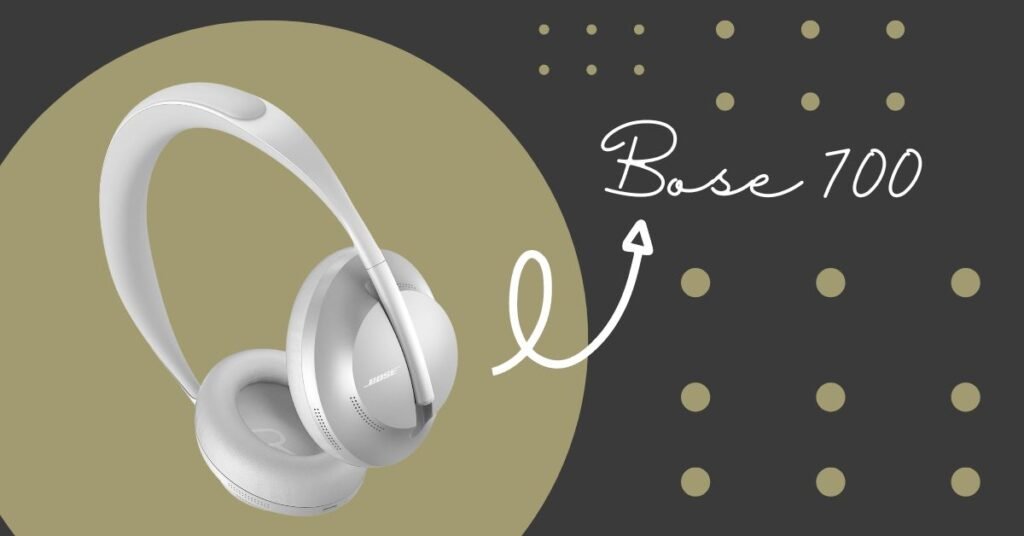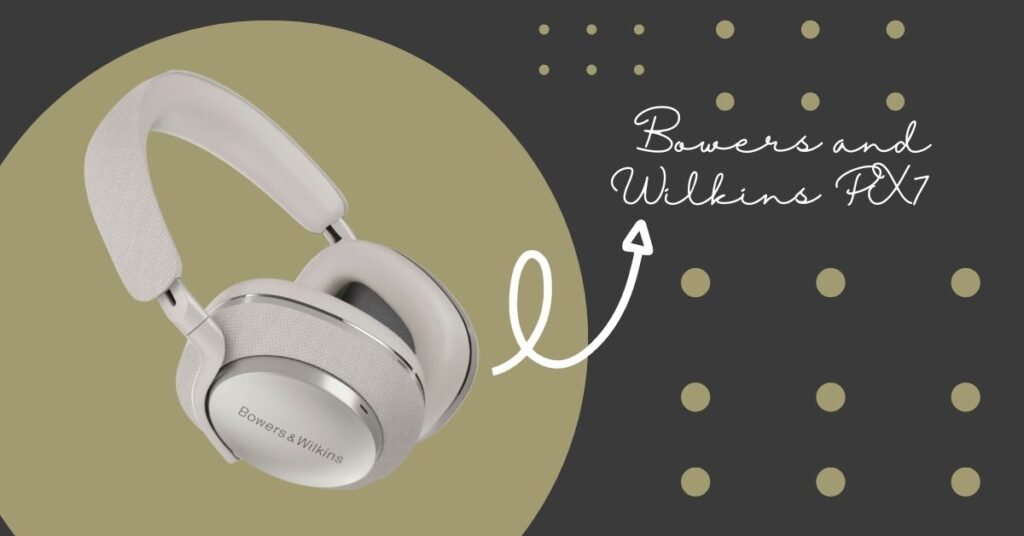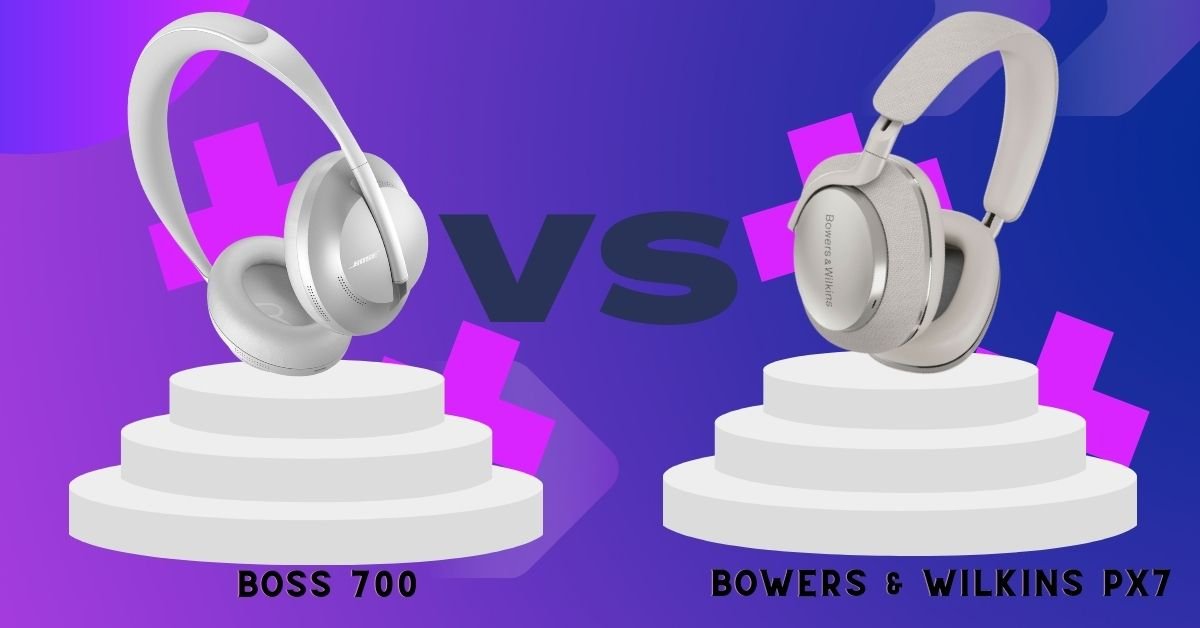Bose 700 and Bowers & Wilkins PX7 are both premium noise-canceling headphones that offer great sound quality and features. However, there are some key differences between the two models that may make one a better choice for you depending on your needs and preferences.
Features Comparison of Bose 700 vs Bowers & Wilkins PX7
Design
Bose 700 has a sleek and modern design with touch controls on the right earcup and a simple button layout. The Bowers & Wilkins PX7 has a more traditional design with physical buttons on the right earcup and a rotating dial on the left earcup for volume control.
Noise Cancellation
Both headphones have active noise cancellation, but Bose 700 has 11 levels of noise cancellation, which allows you to adjust the level of noise cancellation to suit your environment. The Bowers & Wilkins PX7 has automatic noise cancellation, which adjusts the level of noise cancellation based on your surroundings.
Sound Quality
The Bose 700 has a balanced sound signature with good bass and clear mids and highs. The Bowers & Wilkins PX7 has a more bass-heavy sound signature with a slightly more pronounced low-end and a more detailed high-end.
Battery Life
Bose 700 has a battery life of up to 20 hours with noise cancellation on, while the Bowers & Wilkins PX7 has a battery life of up to 30 hours with noise cancellation on.
Price and Value Comparison
Price
Both the Bose 700 and Bowers & Wilkins PX7 are premium noise-canceling headphones and come at a premium price point. The Bose 700 is currently priced at $329.95 and the Bowers & Wilkins PX7 is priced at $349.99.
Value
When it comes to value, both headphones offer a lot for their respective prices. The Bose 700 offers a sleek and modern design, 11 levels of noise cancellation, and a balanced sound signature. The Bowers & Wilkins PX7 offers a more traditional design, automatic noise cancellation, and a bass-heavy sound signature.
In terms of additional features, the Bose 700 has built-in Alexa and Google Assistant and has Bose AR, an audio-only version of augmented reality. The Bowers & Wilkins PX7 comes with a hard carrying case and has aptX Adaptive technology, which promises to deliver high-quality audio over Bluetooth.
Ultimately, the decision of which headphones to buy will come down to your personal preferences, budget, and what features are most important to you. Both the Bose 700 and Bowers & Wilkins PX7 are high-quality headphones that offer great sound and features, but the Bose 700 may be a better value for those who want a more modern design and built-in voice assistants, while the Bowers & Wilkins PX7 may be a better value for those who want a more traditional design and longer battery life.

Call Clarity of Bose 700 vs Bowers & Wilkins PX7
Call clarity refers to the quality of sound during phone calls. Both the Bose 700 and Bowers & Wilkins PX7 have advanced microphone systems for clear call quality. The Bose 700 has a total of eight microphones, four of which are used for active noise cancellation and four for call clarity. The Bowers & Wilkins PX7 also has four microphones, which are used for both active noise cancellation and call clarity. Both headphones also have advanced noise reduction algorithms that help to eliminate background noise and enhance the clarity of the caller’s voice.
Additionally, the Bose 700 has a unique feature called “Conversation Mode” which allows you to quickly lower the volume of your music and amplify your surroundings, making it easier to have a conversation without having to take off your headphones.
Both headphones offer great call clarity, but the Bose 700 may have an edge due to its advanced microphone system and Conversation Mode feature.
Extra Features of Bose 700 vs Bowers & Wilkins PX7
Bose 700:
- Built-in Alexa and Google Assistant: The Bose 700 has built-in support for both Alexa and Google Assistant, allowing you to control your music, make calls, and access other features using your voice.
- Bose AR: Bose AR is an audio-only version of augmented reality, which enables you to receive audio-based information and experiences through headphones. This feature can be used for things such as guided meditation, language learning, and more.
- Touch Controls: The Bose 700 has touch controls on the right earcup that allow you to control your music and other features with a simple swipe or tap.
Bowers & Wilkins PX7:
- Aptx Adaptive Technology: The PX7 has aptX Adaptive technology which promises to deliver high-quality audio over Bluetooth. This technology adapts to your environment, adjusting the audio to provide the best quality possible.
- Hard Carrying Case: The PX7 comes with a hard carrying case, which can protect the headphones when not in use and make it easy to transport them.
- Rotary Dial: The PX7 has a rotating dial on the left earcup which can be used to control volume, skip tracks and answer calls.
- Customizable EQ: The PX7 supports custom EQ settings, which allows users to personalize the sound to their preferences.
Both headphones offer additional features that can enhance the user experience and make them more versatile. The Bose 700 offers more advanced voice assistants and Bose AR, while the PX7 offers aptX Adaptive, hard carrying case and customizable EQ. It’s important to take into consideration which features are important for you, and make your decision accordingly.

Pros & Cons of Bose 700 vs Bowers and Wilkins PX7
Bose 700:
Pros
- Sleek and modern design
- 11 levels of noise cancellation, adjustable to suit your environment
- Built-in Alexa and Google Assistant
- Bose AR – an audio-only version of augmented reality
- Balanced sound signature with good bass and clear mids and highs
- Advanced microphone system for clear call quality
- Conversation Mode for easy conversations without taking off the headphones
Cons
- Relatively short battery life of up to 20 hours with noise cancellation on
- Touch controls may take some getting used to
Bowers & Wilkins PX7:
Pros
- Traditional design
- Automatic noise cancellation that adjusts based on your surroundings
- Bass-heavy sound signature with a slightly more pronounced low-end and a more detailed high-end
- Advanced microphone system for clear call quality
- Longer battery life of up to 30 hours with noise cancellation on
- Comes with a hard carrying case
- aptX Adaptive technology, which promises to deliver high-quality audio over Bluetooth
Cons
- Physical buttons may not be as convenient as touch controls
- More expensive than the Bose 700
- Automatic noise cancellation may not be as customizable as the 11 levels on the Bose 700.
It’s important to note that these pros and cons are all relative and depend on user preferences and needs.
Comparison Table of Bose 700 vs Bowers and Wilkins PX7
| Feature | Bose 700 | Bowers & Wilkins PX7 |
| Design | Sleek and modern with touch controls on the right earcup | Traditional with physical buttons on the right earcup and a rotating dial on the left earcup for volume control |
| Noise Cancellation | 11 levels of noise cancellation, adjustable to suit your environment | Automatic noise cancellation that adjusts based on your surroundings |
| Sound Quality | Balanced sound signature with good bass and clear mids and highs | Bass-heavy sound signature with a slightly more pronounced low-end and a more detailed high-end |
| Battery Life | Up to 20 hours with noise cancellation on | Up to 30 hours with noise cancellation on |
| Additional features | Built-in Alexa and Google Assistant, Bose AR – an audio-only version of augmented reality. | Hard carrying case, aptX Adaptive technology, which promises to deliver high-quality audio over Bluetooth. |
| Price | $329.95 | $349.99 |
Note: Price and battery life are approximate and subject to change.
Conclusion
In conclusion, both headphones are great choices for anyone looking for high-quality noise-canceling headphones. The Bose 700 is a great option for those who want a sleek and modern design with adjustable noise cancellation, while the Bowers & Wilkins PX7 is a great option for those who want a more traditional design with a bass-heavy sound signature and longer battery life.
Frequently Asked Questions
Which headphones have better noise cancellation?
Both the Bose 700 and Bowers & Wilkins PX7 have active noise cancellation. However, the Bose 700 has 11 levels of noise cancellation which allows you to adjust the level of noise cancellation to suit your environment, while the Bowers & Wilkins PX7 has automatic noise cancellation which adjusts the level of noise cancellation based on your surroundings.
Which headphones have better sound quality?
Both the Bose 700 and Bowers & Wilkins PX7 have great sound quality. The Bose 700 has a balanced sound signature with good bass and clear mids and highs. The Bowers & Wilkins PX7 has a more bass-heavy sound signature with a slightly more pronounced low-end and a more detailed high-end.
Which headphones have a longer battery life?
The Bowers & Wilkins PX7 has a longer battery life of up to 30 hours with noise cancellation on, while the Bose 700 has a battery life of up to 20 hours with noise cancellation on.
Do Bose 700 and Bowers & Wilkins PX7 have any additional features?
The Bose 700 has built-in Alexa and Google Assistant and has Bose AR, an audio-only version of augmented reality. The Bowers & Wilkins PX7 comes with a hard carrying case and has aptX Adaptive technology, which promises to deliver high-quality audio over Bluetooth.
Are these headphones worth the price?
Both the Bose 700 and Bowers & Wilkins PX7 are premium noise-canceling headphones and come at a premium price point. Both headphones offer a lot for their respective prices, with the Bose 700 offering a sleek and modern design, 11 levels of noise cancellation and built-in voice assistants, while the Bowers & Wilkins PX7 offers a more traditional design, automatic noise cancellation, longer battery life and aptX Adaptive technology. Ultimately, the decision of whether these headphones are worth the price will depend on personal preferences and budget.

